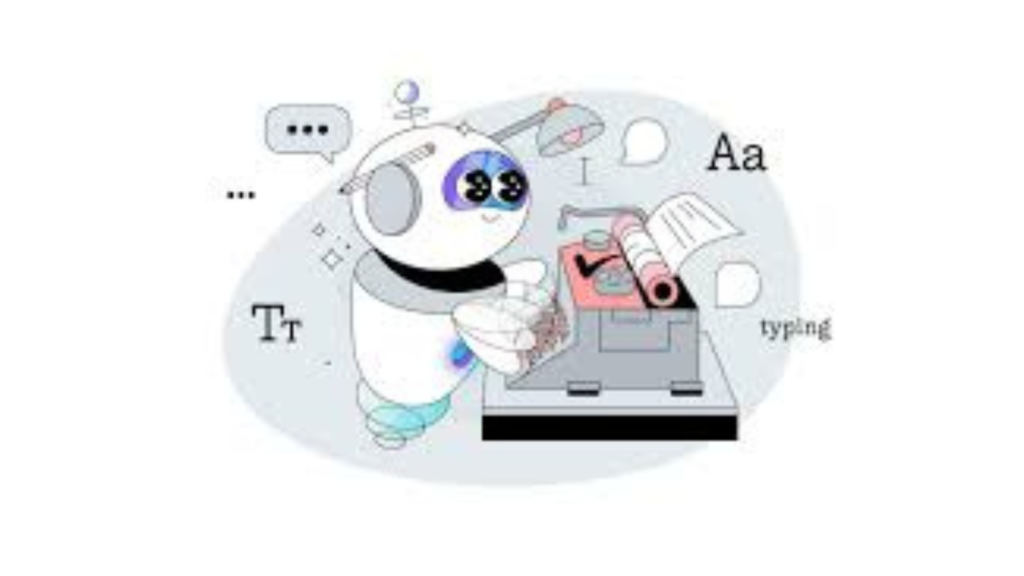- You are here:
- Home »
- AI Writing »

Writing with AI for Beginners: A Step-by-Step Guide
Writing with AI isn’t as simple as pressing a button and watching a book magically appear. Many beginners give up quickly when their first attempts produce low-quality, generic, or unusable content. However, by using the right tools, models, and techniques, AI can transform your writing process and even enhance creativity.
In this guide, we’ll cover:
✔️ The best AI writing tools
✔️ How to get better output from AI
✔️ Key techniques to improve AI-generated content
Whether you’re a fiction author, blogger, or non-fiction writer, this guide will help you unlock AI’s full potential in your writing.
Understanding AI Writing: Large Language Models vs. Writing Tools
AI writing is powered by Large Language Models (LLMs)—advanced AI systems trained on vast amounts of data. However, AI tools act as the interface that makes using these models easier.
What Are Large Language Models (LLMs)?
LLMs are the brains behind AI writing. The most popular ones include:
- GPT-4 (OpenAI) – Used in ChatGPT and many AI writing tools.
- Claude (Anthropic) – Known for its creative and structured writing.
- Gemini (Google) – A powerful AI with advanced reasoning.
- Llama (Meta) – Open-source AI for customized models.
- Mistral – Popular for specific writing tasks and content generation.
AI Writing Tools That Use LLMs
AI tools wrap LLMs into user-friendly platforms, providing additional features such as content structuring, brainstorming, and formatting.
Some of the most effective AI writing tools for beginners include:
✔️ ChatGPT (OpenAI) – A flexible AI chatbot for writing, brainstorming, and editing.
✔️ Claude (Anthropic) – Great for fiction and structured content.
✔️ Sudowrite – Tailored for novelists, with AI-assisted storytelling features.
✔️ NovelCrafter – Built specifically for long-form fiction writing.
✔️ RiteBot AI – A tool for generating articles, book outlines, and AI-assisted brainstorming.
How to Use AI Effectively for Writing
Many beginners struggle with AI because they expect perfect content from the start. The key is to guide the AI properly using the following strategies.
1. The F.I.T.S Framework for Better AI Output
To get high-quality writing, follow the F.I.T.S. method when prompting AI:
🔹 F – Framework
Give the AI a clear structure to follow. Instead of saying “Write a novel outline,” say:
📝 “Create a novel outline using the Hero’s Journey structure.”
🔹 I – Identity
Assign the AI a role to improve accuracy. For example:
📝 “You are a bestselling mystery author. Write a gripping first chapter.”
🔹 T – Task
Be specific about what you want the AI to do. Instead of “Write about space travel,” say:
📝 “Write a detailed introduction about the effects of space travel on human psychology.”
🔹 S – Style
Give style instructions to match your voice. Instead of “Write a story,” say:
📝 “Write a suspenseful crime scene in the style of Agatha Christie.”
2. The Fractal Technique: Writing in Steps
Instead of generating full articles or books in one go, break the writing process into smaller steps:
1️⃣ Brainstorm Ideas – Ask AI to suggest unique book or article ideas.
2️⃣ Outline the Structure – Generate a chapter-by-chapter breakdown.
3️⃣ Expand Key Points – Flesh out sections one by one.
4️⃣ Draft the Content – Let AI generate a first draft based on your outline.
5️⃣ Edit & Validate – Manually refine the AI’s output for accuracy and style.
By working step-by-step, you keep the writing process structured and manageable.
3. Chain-of-Thought Prompting: AI That Thinks Before Writing
Instead of asking AI to “Write an article,” guide it through a thinking process first:
✔️ Step 1: Ask AI to plan the content
📝 “Create a detailed outline for an article about AI writing for beginners.”
✔️ Step 2: Review & refine the outline
📝 “Now expand on Point 1 with examples and clear explanations.”
✔️ Step 3: Let AI write based on the outline
📝 “Using the outline, generate a detailed article in a conversational tone.”
This technique helps AI produce higher-quality and more structured content.
Best AI Settings for Writing: Tweaking the Output
When using AI directly through an API (such as OpenAI’s Playground or OpenRouter), you can control specific parameters for better results:
✔️ Temperature:
- Lower (0.7 or below) → More factual & predictable writing.
- Higher (1.2 or above) → More creative & unpredictable writing.
✔️ Max Tokens:
- Affects how much AI can generate in one response.
- Increase if AI cuts off mid-sentence.
✔️ Top P & Frequency Penalty:
- Adjusts variety & repetition in AI’s word choices.
For long-form writing, keeping temperature at 1.0-1.2 gives a balance of creativity and coherence.
AI for Editing & Refining Content
Even the best AI-generated drafts need editing. Here’s how AI can also help polish writing:
✔️ Grammar & Clarity:
Tools like ProWritingAid or Grammarly refine AI-generated text.
✔️ Style Adjustments:
Ask AI to rewrite content in a different tone or complexity level.
📝 “Make this paragraph more engaging and conversational.”
✔️ Fact-Checking & Validation:
AI can assist with research, but always verify sources manually.
Conclusion: AI Writing is a Tool, Not a Replacement
AI won’t replace human creativity, but it can enhance productivity and idea generation. The key to success is understanding how to guide AI properly.
✅ Use the right AI tools for your needs.
✅ Apply structured prompts like the F.I.T.S. method.
✅ Break writing into steps using the Fractal Technique.
✅ Refine AI-generated content with editing tools and manual input.
By combining AI efficiency with human creativity, you can write faster, smarter, and better!

